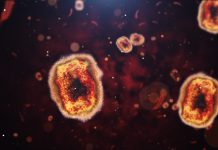The National Institutes of Health and Salk Institute researchers have made strides in understanding the molecular mechanisms behind HIV drug resistance mechanisms
Their groundbreaking study, published in Science Advances on July 21, 2023, focuses on Dolutegravir, one of the most effective antiviral drugs to treat HIV
HIV is notorious for its ability to evolve and develop resistance to antiviral medications. Dolutegravir and similar drugs function by inhibiting integrase, a crucial protein responsible for integrating HIV’s genetic material into human cells. However, with the virus continually mutating, more HIV strains become resistant to dolutegravir.
How HIV overcomes Dolutegravir
Previously, the research team led by Salk Associate Professor Dmitry Lyumkis unveiled the 3D structure of the integrase protein while bound to DNA and how drugs like Dolutegravir obstructed its function.
However, they were uncertain about how the integrase structure changed when the virus developed resistance to dolutegravir.
In their latest study, the researchers engineered various versions of integrase with known Dolutegravir-resistant mutations.
Analysing the 3D structure of each mutant integrase provided insights into why Dolutegravir could no longer effectively bind to and block these altered proteins. By assessing the fitness of the virus and enzyme activity, they better understood the development of drug resistance in patients.
Promising new compound: 4d HIV drug
Intriguingly, the researchers tested an experimental HIV drug called 4d, developed by their NIH collaborators as a next-generation integrase-targeting drug. In pre-clinical animal trials, 4d exhibited significant promise in blocking Dolutegravir-resistant integrase proteins across various variants.
This suggests that 4d or its derivatives could offer an effective treatment option for patients resistant to Dolutegravir.
Insights for future therapeutics
The structural data on how 4d interacts with Dolutegravir-resistant integrase proteins holds potential for combating drug resistance and serves as a blueprint for designing other effective therapeutics.
Co-senior author Robert Craigie of the National Institute of Diabetes and Digestive and Kidney Diseases (NIDDK) emphasizes that the stacking pattern of 4d molecules on top of the integrase protein-DNA assembly could inspire the development of new compounds to overcome drug resistance.
As the researchers delve deeper into how integrase variants evolve and their impact on drug response, they hope to gain valuable insights into countering resistance and enhancing the effectiveness of clinically used HIV drugs, ultimately advancing the fight against HIV infection
Editor's Recommended Articles
-
Must Read >> Why have HIV outcomes improved with urban gardening?











